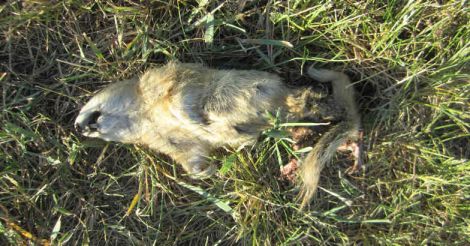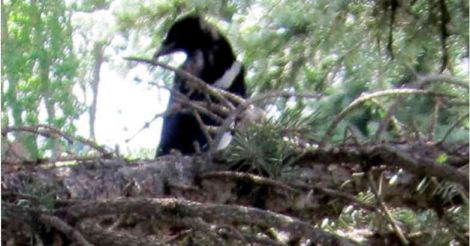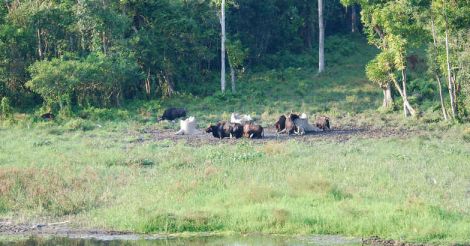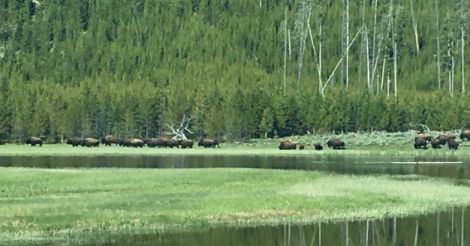International cooperation is now an important aspect for successful conservation efforts between adjacent nations. The network of illegal wildlife trade markets, wildlife and wildlife products trafficking across porous international borders and highly organized poaching units have been so strong that it is almost impossible for any nation to single headedly resolve the crisis in the real sense of the term.
Approaches like the Joint Conservation Initiative (JCI) are therefore gaining momentum for successful and effective conservation efforts between countries that share international land and water borders; and are known to be important wildlife trafficking routes.
Remote, inaccessible locations, difficult terrains, dense forests, poor infrastructure, lack of proper communication and network together with lack of proper surveillance and monitoring across porous international borders in developing and under developed nations have been few of the root causes for thriving international trade routes not just for trafficking wildlife and various contraband wildlife and forest products; but also related to trafficking of illegal arms, drugs, human victims as well as helping the movements of insurgents between two countries.
 Photo: Saikat Kumar Basu
Photo: Saikat Kumar BasuThe border security forces and intelligence network of any one country will never be able to function to the best of their ability; unless there is nice cooperation and coordination between the security forces and border guards on either side of the remote, inaccessible and heavily forested border areas. Strategic cooperation between adjacent nations sharing international borders (both land and water) in the form of Joint Border Management (JBM) and/or Joint Border Patrolling (JBP) is an effective mechanism to control border and frontier areas more successfully.
Strategic and military cooperation between nations sharing vulnerable international borders cannot only enhance diplomatic, trade and socio-economic ties between the two nations; but can also help in efficiently controlling various crimes like abduction, armed burglary, molestation, insurgent activities in the remote border areas; together with complete or partial control on the trafficking of arms, drugs, human victims, wildlife and forest products between adjacent countries.
 Photo: Saikat Kumar Basu
Photo: Saikat Kumar BasuThe Joint Conservation Initiative (JCI) has the ability not only to help and develop border cooperation between two nations and in wildlife and forest conservation; but also help in establishing peace and security in vulnerable border (frontier) areas, help in building better infrastructure, building local economy and enhancing overall national security. The JCI can be further extended between adjacent countries in the form of Joint Wildlife Conservation Management (JWCM) and Joint Biodiversity Management (JBM) programs to further build up friendship, cooperation and coordination between the countries or partners involved in the process. Let us explore the opportunities one by one.
Several countries on either side of the so called international border have similar ecosystems and environments and almost similar biogeographic domains or biomes. As a result they share similar flora and fauna in adjoining countries. Many of these species could be trans boundary mammals (like tigers and elephants) or migrating herds of different herbivores or bird species that frequently move on either side of the international borders for the purpose of breeding and annual migration in search of better breeding, nesting and foraging grounds or in search of water or a potential mate.
 Photo: Saikat Kumar Basu
Photo: Saikat Kumar BasuThis natural process makes them extremely vulnerable to poachers and wildlife traffickers. Mechanisms such Joint Wildlife Conservation Management (JWCM) and Joint Biodiversity Management (JBM) programs signed between two adjacent countries sharing international borders can effectively facilitate the management of forests and wildlife spread and bio geographically distributed across international borders establishing the practices of better protection and conservation of biodiversity, wildlife and local forest and forest resources. If the border security forces, intelligence networks, wildlife and forest protection and conservation agencies and local administrations on either side of the international borders join hands; there is hardly any room left for anti-socials, insurgents and various traffickers to operate efficiently in the remote border areas. Hence, the wildlife trade and poaching could be effectively crashed by such international coordinated efforts and cooperation.
 Photo: Saikat Kumar Basu
Photo: Saikat Kumar BasuSuch process of cooperation between adjacent countries could help to build up a successful model of Participatory Conservation Management (PCM) under the broader coverage of Joint Conservation Initiative (JCI) between two nations. Such initiatives could involve Joint Captive Breeding (JCB) programs in both countries helping in successful release, relocation and/or translocation of several species adjacent the international borders. Survey data in the population dynamics of target species of flora and fauna on either side of the international border could provide even more powerful tools in successful conservation management.
A particular species showing population explosion in one country while simultaneous decline in the other could thus be balanced by some exchange programs to introduce or reintroduce target species from one signing country to another for establishing new protected forested areas with suitable flora and fauna and appropriate population dynamics in the future. The Joint Conservation Initiative (JCI) model can help answer questions of protecting several common susceptible, vulnerable, endangered, critically endangered species of flora and fauna of either nation more effectively and efficiently form a long term perspective.
Furthermore, programs like Joint Natural Resource Management (JNRM) and Joint Resource Allocation and Management (JRAM) could further enhance cooperation between participating nations. Natural resources like forests, mining areas, rivers and other major waterways often criss-cross international political boundaries.
It is often quite difficult to properly utilize these natural resources for building local and regional economy due to remote locations, lack of infrastructure, investments and political will and determination. Joint ventures, investments, initiatives and efforts on such shared economic development projects using Joint Natural Resource Management (JNRM) and Joint Resource Allocation and Management (JRAM) mechanisms and approaches can be helpful for both participating nations.
Such international projects are increasingly taking shapes in almost all the continents for developing regional economy, promoting better trade and commerce, tourism, education, research and development as well as socio-political, socio-economic, strategic and diplomatic ties between adjacent nations.
 Photo: Saikat Kumar Basu
Photo: Saikat Kumar BasuThis has the ability to better infrastructure development in the border areas, improve the quality of life and security on both sides and aid to the Joint Conservation Initiative (JCI) with more strength and vigor for protecting natural ecosystems, environments, forests and forest products (major and minor), wildlife; and last but not the least regional biodiversity significantly.
(The author is a Canada and India based freelance journalist specializing in global geo-political, strategic and foreign policy issues, science & technology and environment & conservation related themes.)
Read more: Latest from Call of the Wild

























 Photo: Saikat Kumar Basu
Photo: Saikat Kumar Basu